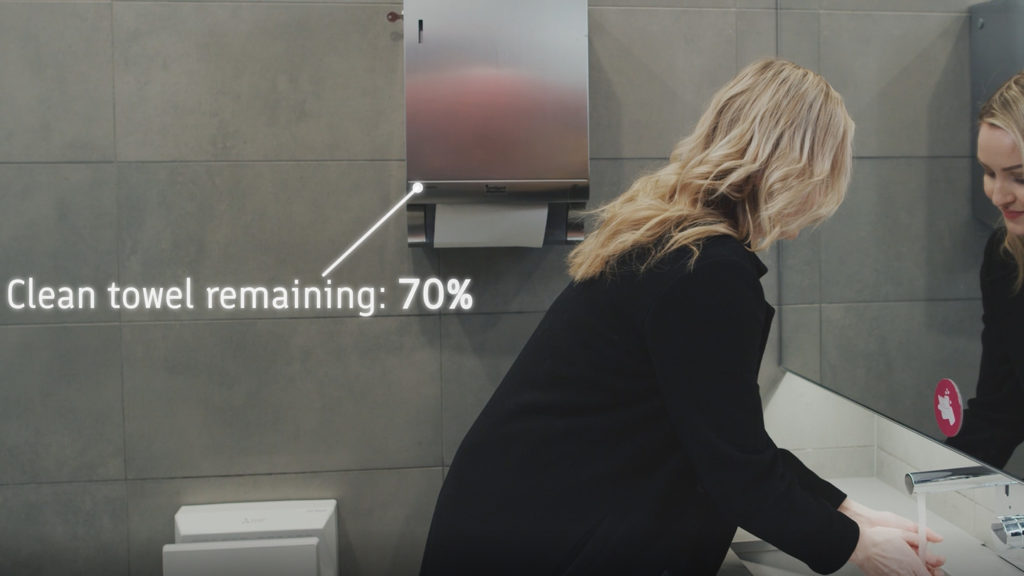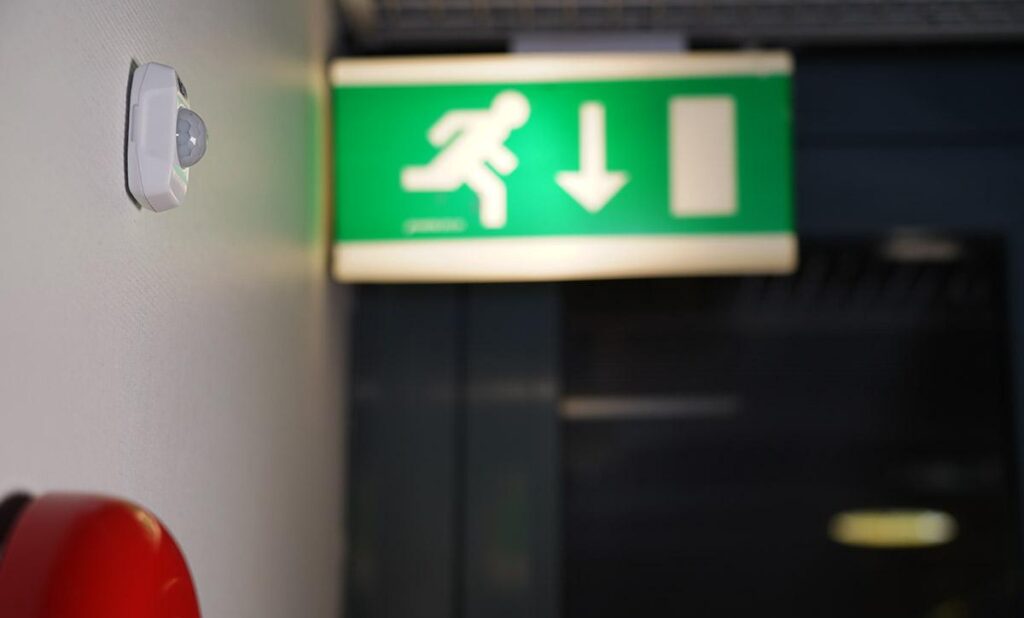Based on surveys, the cleanliness of washroom spaces affects the choice of shopping venue, and 66% of shoppers also recommend the mall to friends on this basis. Satisfied customers have been proven to increase their purchase value by 33% on their next visit. Keeping a bathroom clean and stocked is a big part of customer satisfaction. But your bathroom can do more for you than just keep customers happy. It’s a place you can save money, be more efficient, and save energy, too. To achieve all three of those goals, you need to consider new technologies that can help you get there. The internet of things, or IoT, is one way to make a washroom smarter. Keep reading to learn more about how smart washrooms impacts your business.
IoT For A Smart Washroom
IoT stands for the internet of things. It essentially refers to smart devices, which is any device that is capable of autonomous computing. Those devices are usually connected to other devices in a wireless network that provides the end-user useful data.
In terms of smart washrooms, the IoT can make a bathroom energy efficient, reliably clean and stocked, and more affordable. Below are some of the ways that the IoT and a smart washroom benefits your business.
IoT application for cleaners
Typically, the people who clean bathrooms use a paper checklist and a schedule to keep track of what needs to be cleaned and when. But what happens if paper towel runs out or your customers have no soap to wash their hands between scheduled check-ups?
In the best-case scenario: an untidy bathroom that’s missing stock. In the worst-case scenario: customers with a bad experience of the bathroom and who decide not to return.
The IoT uses smart devices to ensure that these things don’t happen.
For example, IoT sensors can be placed inside your existing dispensers for hand towels, soap, toilet paper, and even trash bins. These sensors monitor the fill rate of each essential bathroom product – and you don’t even have to purchase new containers.

If something runs out from any one of these, that information is sent directly to facility managers. That means there’s no need to send cleaners out for re-stocking until re-stocking is really needed, and you save time and money on manpower. Customers won’t even know that the devices are there, but will always have a good experience in your washroom.
Restocking and inventory
Sensors that are set to alert maintenance teams about the need for soap, paper towels, and toilet papers mean things are only stocked when they need to be. But this also has implications for inventory.
IoT allows for a lot more control over data. With these types of sensors for your washroom, facility managers can get an inside look at how much inventory they need at certain times of the day, week, or month.
That allows for more efficient purchasing, scheduling, and can even help get ahead of repairs. It also allows you to plan for peak seasons in certain places, such as sporting facilities or in busy airports.
Traffic data
There are IoT devices that provide data regarding the traffic in your bathrooms. With movement tracking tools for facility managers, you can learn how many people use your bathrooms, what bathrooms are used the most, and what the busiest hours for those bathrooms are.
Combined with analytics, that gives you useful data about how traffic flows through your bathroom. This can help you schedule cleaners for peak periods more efficiently.
With sensors that essentially count how many people have visited any specific bathroom, you can also send cleaners when they’re needed most. You have the ability to set these sensors on a counter, and an alert will be sent when the washroom reaches that number of visits. Instead of working off of a time schedule, this gives you a far more accurate indication of when a bathroom needs cleaning.

Efficiency
Without the IoT in your bathroom, you likely rely on those paper checklists. These are a good way to keep track of dates and times, what needs to be done, and by who. That is until they’re lost or destroyed and all the data they hold is unuseable.
The digitization of a smart washroom holds valuable data on its own network. You can combine that data with analytics to give you insights into matters like inventory, water consumption, and peak times. And all of that data can be used to make the business more efficient.
Transform Your Washroom To A Smart Washroom
The IoT is changing the ways in which our businesses operate, and that includes facilities like the bathroom. A smart washroom can impact your customer experience, make the company more efficient, and save you both time and money.
Consider installing sensors on items like soap dispensers and hand towels, so you’ll always know when they need refilling. You might also think about sensors that count the number of people entering your bathroom, so you can send out cleaners when the bathroom requires it most. These sensors can also be combined with analytics, to give you real data that translates to better inventory control and even scheduling.

